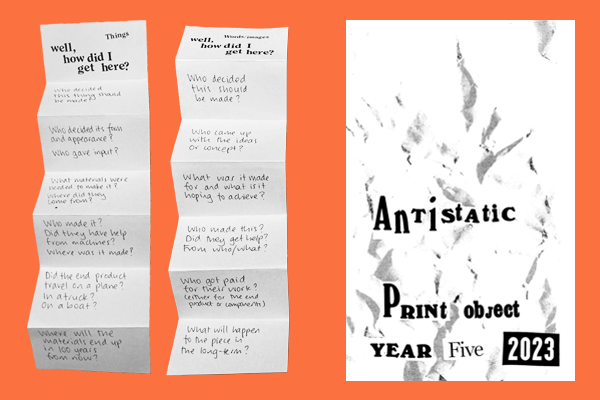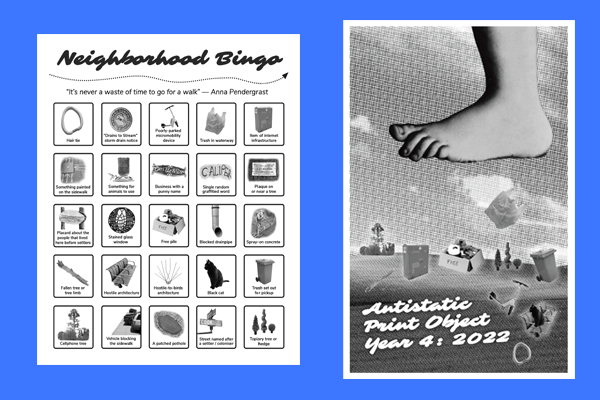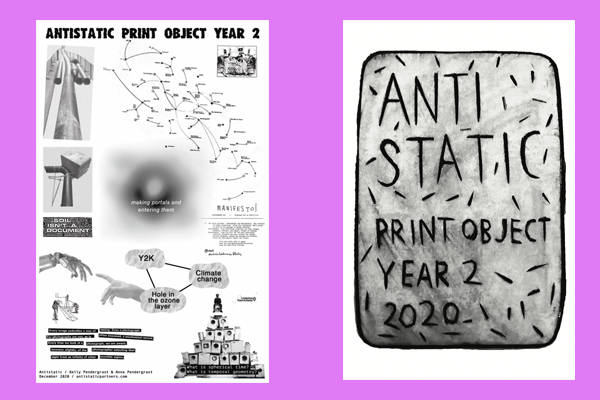Print Object
At the end of each year we write, design and print a paper-based object and send copies in the mail as a gift to friends, colleagues and internet strangers around the world. Print Object has come to function as an annual report and something of a rebellion — an attempt to maintain an analog practice and remember other networks of distribution.
About the project
Antistatic Print Object started in December 2019 when we sent out a hard copy broadsheet version of our regular quarterly newsletter to people who requested it. The first installment stemmed from a desire to make something that isn’t published or available online. Since then, Print Object has become part of our yearly practice. Since the first object, each year we have produced a zine with excerpts of our writing from the year and an additional unique item that is either decorative, provocative, or useful.
Print Object is an exercise in opt-in culture — we ask people to sign up every year and provide a mailing address which we delete after the object is sent. Depending on where recipients live in the world, the item received might vary slightly due to paper size and availability in the US and New Zealand where we print and compile the objects before sending.
We put a call out for Print Object registrations each year via social media and our quarterly newsletter, which you can sign up for here.
Considerations
Making Print Object each year gives us an opportunity to investigate the practical and material implications of a number of the issues we consider more abstractly in our day-to-day work, including:
The resources we use when making Print Object. We have discussed whether we could use entirely reclaimed materials to print on (either homemade paper or scavenged from secondhand sources).
Our postal systems and the costs and methods of distributing physical items throughout the world. We moderate the size and weight of Print Object to ensure it can be mailed as a letter and is pliable enough to run through an automated sorting machine.
The benefits and tradeoffs of automation and outsourcing. Each year we consider whether we want to automate or outsource parts of the process, for instance using mailmerge to format address labels or whether to print and staple ourselves or use a printer service.
Print shop cultures around the world. Small self-service printers are on the decline in both NZ and the US, but the US still has a more robust network of DIY printing spaces (one reason Kelly prints her own while Anna uses a printer service).
The collection of personal data. We try to collect the minimum data necessary to complete the project, consciously avoid keeping data or using it for purposes other than the reason we collect it, and think carefully about whether to apply opt-in or opt-out processes when communicating with people.






